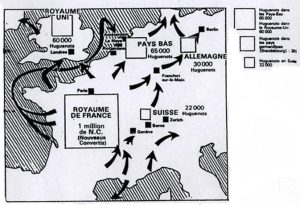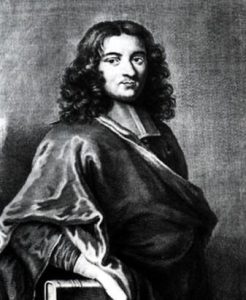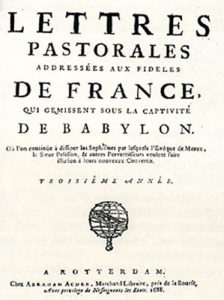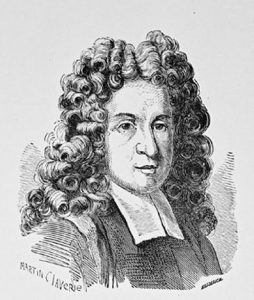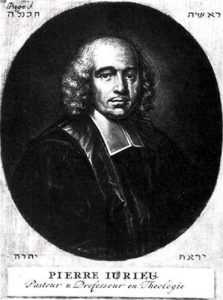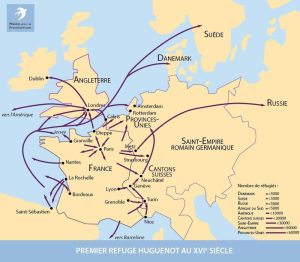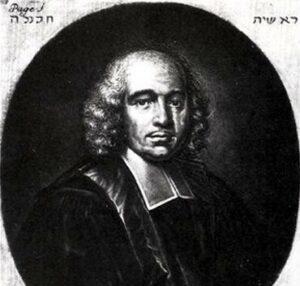“The Great Ark for the Fugitives”
The United Provinces (present day Netherlands), were created in 1579 after a secession war that separated them from the Spanish Netherlands (actuel Netherlands and Belgium), under increasing Hapsburg Catholicism was imposed.
There were different reasons why Huguenots chose the United Provinces. At the end of the 16th century many cultural links between French Calvinists and the Dutch Reformed Church existed. At the foundation of Leiden University in 1575 a French man was appointed professor of theology. Once the faculty had been “cleansed of Armenian tendencies” it was administered by a French theologian maintaining orthodox beliefs. Besides, the Netherlands were becoming more and more hostile to Louis XIV’s absolutism, to his expansionist policy, and refusing any governmental centralism so that every sensitivity could be expressed. Finally the presence of a French speaking Reformed Church, the Walloon Church issued from the Southern Spanish Netherlands, founded as early as the 1570s during the first Refuge, promoted the reception of co-religionists one century later.
First in Amsterdam, and later other municipal and provincial authorities in every big city led a very active advertising policy and promised would-be refugees many rights and privileges. In Gazettes circulated in France, tax exemption, free and definite allocation of the right of bourgeoisie, free and informal access to various guilds, financial help for craftsmen without means were publicised. Competition between various cities to appeal to refugees developed, as the idea of a link between demographic expansion and economic development had spread.
Hospitality
After a long and often hazardous journey over land and sea, an estimated 50,000 to 75,000 refugees, managed to reach the “the Great Ark for the Fugitives” as Pierre Bayle (1647-1706) called it. There was a particularly large number of pastors, military men and craftsmen. Many were exhausted often lacking everything. Large sums of money were needed. Many fund-raising events were organised everywhere, even the Catholics spontaneously participated. When the middle-class generosity waned, in 1695 the Amsterdam magistrates organised a lottery in favour of the refugees, a method successfully used in other cities. To these funds were added donations from municipal and commercial organisations, such as the East India Company. The sums were entrusted to the mutual aide associations of churches who distributed them amongst the poorest.
But after a while the population became less positive towards the increasing number of refugees -mostly poor ones-, as in all the other Refuge countries. It could be due to the differences in habits and customs, to over generous donations, to insufficient watch over the management of raised money. In 1690 the decision was made to repeal the privileges granted since 1681. At the beginning of the 18th century all refugees were required to be naturalised and thus to obey the laws, as everyone else.
Economic contribution
Christian compassion explains the generosity which all Protestant Europe admired, and the gazettes were filled with accounts of the dragonnades. But economic motivations were naturally present, strengthened by the deteriorated political and commercial relations with France. As Colbert shut borders to foreign products, Dutch merchants pursued a protectionist policy, thus industries had to be created to replace the need for French products. Besides, the demographic growth could give a boost to a stagnant economy. Finally the wealthiest refugees could transfer their capital, in 1687 for instance, wealthy merchants who believed they could escape the persecutions arrived in Amsterdam, and the flow of capital stimulated the financial market activities.
The textile industry was boosted by craftsmen who had the latest state-of-the art techniques. In several cities wool, silk and cloth workshops were set up or modernised and subsidised by the local authorities. The glass industry specialised in the production of windows and mirrors.
Luxury trade particularly developed with the flourishing of fan, jewellery, watch and hat boutiques.
On the whole hopes were vain. Indeed the skills of the French craftsmen enabled to make progress, but the economic contribution to the Republic remained marginal in the long term.
Religious influence
The influence of the Refuge on the Walloon Church was great. Within the Dutch Reformed Church many French speaking churches had emerged, which were often deprived of pastors. Among the 600 or so pastors who left France, about 400 went to the United Provinces. About half of them were accepted by the Walloon synod, but there were not enough positions available for all of them.
Many of them smuggled “exhortations” into France for the recent converts to bring them back to the real faith. In his “pastoral Letters” the famous Pierre Jurieu (1637-1713) went so far as to preach rebellion against the royal power. His controversy with Pierre Bayle is documented in the notices about them.
Political influence
Anti-French feelings developed. Pamphlets, satires, caricatures against Louis XIV were all over the gazettes, and even called the King “Scourge of God”. Their violence towards a foreign power put the authorities in an awkward position, despite being banned they continued to be printed. The position of William III, stathouder, opposed to Louis XIV was strengthened, even more so as amongst the refugees were many officers who enrolled in his army and played an important part when William invaded England in 1688.
Cultural influence
The main contribution as the United Provinces became the centre of the “Republic of Letters” is that all documents used French throughout Europe. It should be said that the role of refugee pastors was very important. Either in Walloon churches already founded in the 16th century, or in autonomous churches where pastors were noticed for their eloquence and especially their greatly praised rigorous public speaking. Jacques Saurin (1677-1730) is a fine example. Others were known for their writings, such as Pierre Jurieu.

